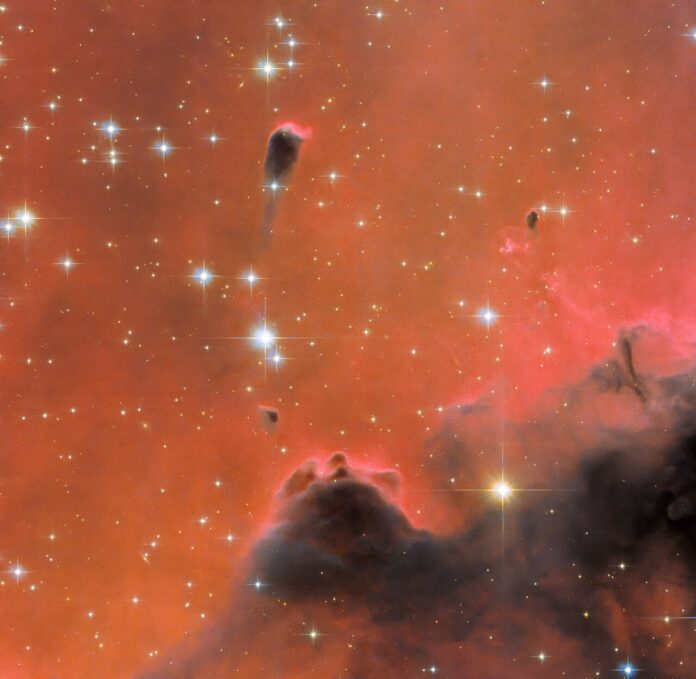An image taken by the Hubble Space Telescope shows a brilliant scene of red. This is a small region of the Westerhout 5 nebula, which lies at a distance of approximately 7000 light years from Earth.
Bathed in bright red light, this radiant image contains many interesting elements, including a free-floating evaporating gas globule (frEGG). In this image, it is the small, dark, tadpole-shaped area at the top left. This floating-looking bubble has two names – [KAG2008] globule 13 and J025838.6+604259.
FrEGGs are a separate class of evaporating gaseous globules (EGGs). Both frEGGs and EGGs are denser regions of gas that photovaporize more readily than the less dense gas that surrounds them. Photovaporization occurs when gas is ionized and scattered by an intense radiation source – typically young hot stars that emit huge amounts of ultraviolet (UV) light.
EGGs have been identified relatively recently, most notably at the tips of the iconic Pillars of Creation, photographed by Hubble in 1995. FrEGGs were classified even later, and are distinguished from EGGs by being detached and having a distinct head-tail shape.
FrEGGs and EGGs are of particular interest because their density makes it difficult for the intense ultraviolet radiation found in regions rich in young stars to penetrate them. Their relative opacity means that the gas in them is protected from ionization and photoevaporation. Astronomers believe this is important for protostar formation and that many frEGGs and EGGs contribute to the birth of new stars.
The frEGG in this image is a dark spot in a sea of red light. The red color is a type of light emission known as H-alpha radiation. H-alpha occurs when a very energetic electron in a hydrogen atom loses some of its energy, releasing this characteristic red light as it becomes less energetic.









